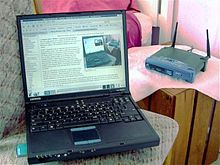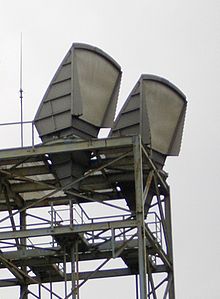
Back نطاق سي Arabic সি ব্যান্ড (আইইইই) Bengali/Bangla Banda C Catalan Banda C Spanish C banda Basque باند سی Persian Bande C French Pita frekuensi C ID Banda C Italian Cバンド Japanese
Frequency range | 4–8 GHz |
|---|---|
Wavelength range | 7.5–3.75 cm |
Related bands |
| Radio bands | ||||||||||||
|---|---|---|---|---|---|---|---|---|---|---|---|---|
| ITU | ||||||||||||
|
||||||||||||
| EU / NATO / US ECM | ||||||||||||
| IEEE | ||||||||||||
| Other TV and radio | ||||||||||||


The C band is a designation by the Institute of Electrical and Electronics Engineers (IEEE) for a portion of the electromagnetic spectrum in the microwave range of frequencies ranging from 4.0 to 8.0 gigahertz (GHz).[1] However, the U.S. Federal Communications Commission C band proceeding and auction, designated 3.7–4.2 GHz as C band.[2] The C band is used for many satellite communications transmissions, some cordless telephones, as well as some radar and weather radar systems.
The C band contains the 5.725 - 5.875 GHz ISM band allowing unlicensed use by low power devices, such as garage door openers, wireless doorbells, and baby monitors. A very large use is by the high frequency (5.2 GHz) band of Wi-Fi (IEEE 802.11a) wireless computer networks. These are the most widely used computer networks in the world, used to allow laptops, smartphones, printers and TVs to connect to the internet through a wireless router in home and small office networks, and access points in hotels, libraries, and coffee shops.
- ^ Peebles, Peyton Z., Jr., (1998), Radar Principles, John Wiley and Sons, Inc., p. 20.
- ^ "Auction 107: 3.7 GHz Service". Federal Communications Commission. Retrieved 2023-10-09.